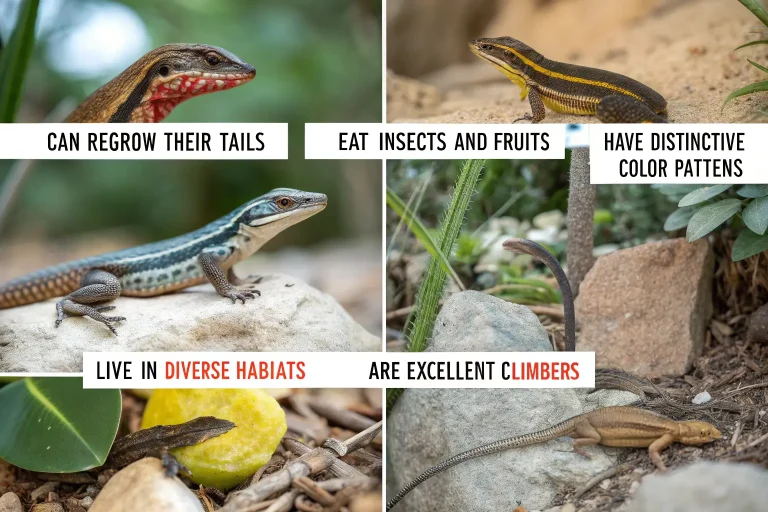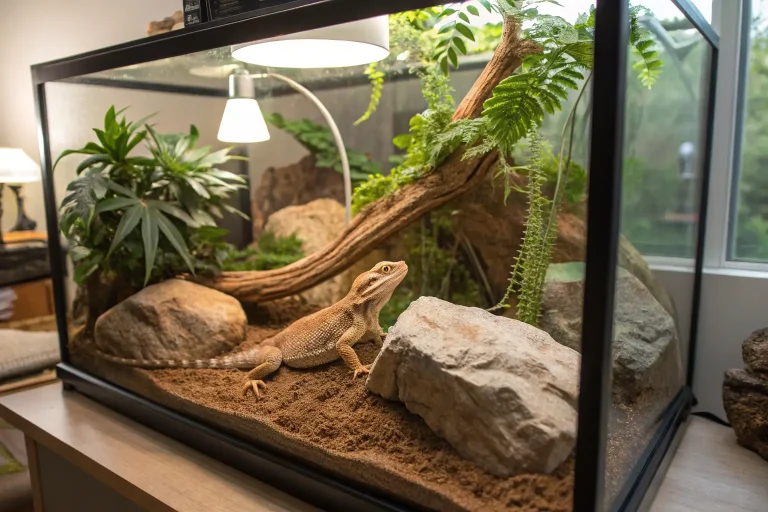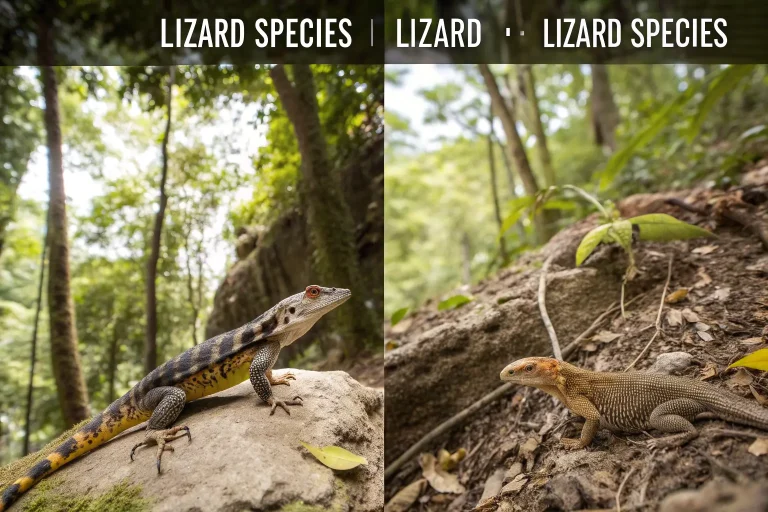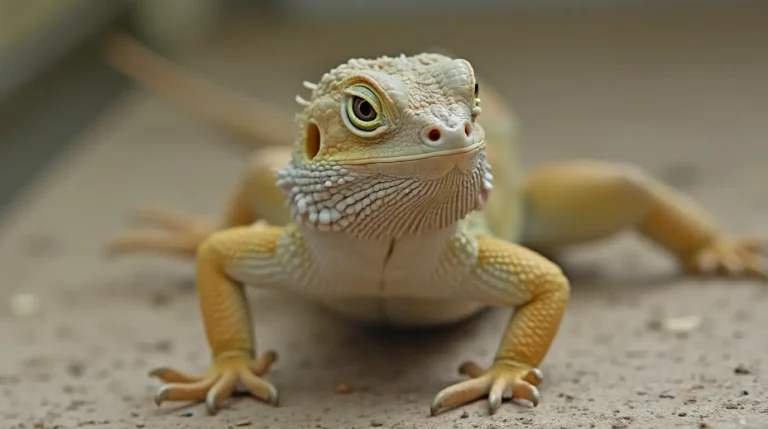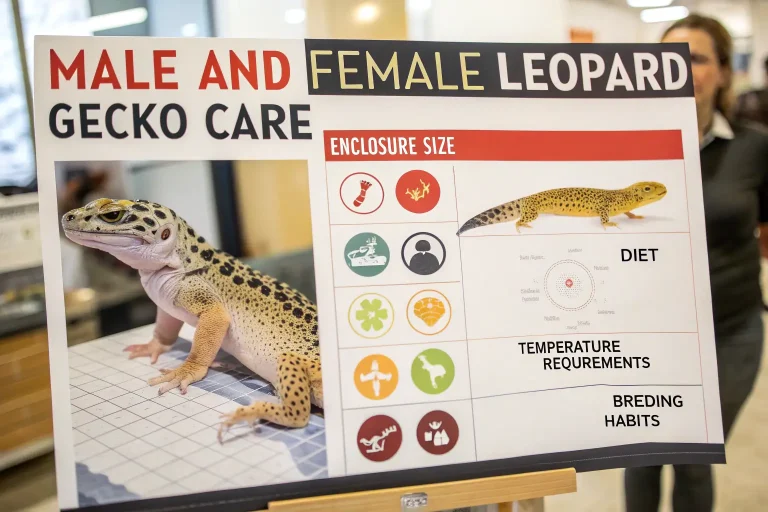Water Monitor Lizard 101: How to Care for Your Scaly Friend
Is your water monitor lizard looking for love and care? Uncover essential tips and solutions for a happy, healthy reptile companion. Dive into our guide now!
Introduction
The water monitor lizard, with its impressive size and prehistoric appearance, has become an increasingly popular exotic pet among reptile enthusiasts. These magnificent creatures, native to South and Southeast Asia, are the second-largest lizards in the world after the Komodo dragon. Caring for a water monitor lizard requires significant dedication, specialized knowledge, and appropriate resources to meet their complex needs.
Understanding how to properly care for your water monitor lizard isn’t just about keeping an unusual pet—it’s about respecting a fascinating species that has roamed our planet for millions of years. These intelligent reptiles can recognize their owners, learn behaviors, and form bonds when properly socialized. With lifespans potentially exceeding 20 years in captivity, bringing a water monitor into your home represents a substantial long-term commitment.
Did you know that water monitors have incredibly powerful tails that they use not only for swimming but also as defensive weapons? In the wild, a well-placed tail whip can deter predators and establish dominance within their territory. This is just one of the many remarkable adaptations that make water monitors such captivating creatures to study and care for.
Species Overview
Scientific Name: Varanus salvator
The water monitor lizard belongs to the family Varanidae, which includes all monitor lizards. The genus Varanus encompasses approximately 80 species of monitors, with salvator specifically referring to the water monitor.
Physical Characteristics:
Water monitor lizards are impressive in size, typically reaching 4-5 feet in length when kept in captivity, though they can grow significantly larger in the wild—up to 7-9 feet including their tail. Adult males tend to be larger than females, exhibiting sexual dimorphism. Their bodies feature powerful legs with sharp claws, essential for climbing and digging, and long, muscular tails that make up about half their total length.
Their coloration varies widely depending on subspecies and locality, but most display a dark gray to black base color with yellow or white spots and ocelli (eye-like markings). Their tongues are deeply forked and bluish-black, used for their extraordinary chemosensory abilities. Water monitors have strong, sharp teeth and powerful jaws that they use to grasp prey.
Subspecies:
Several recognized subspecies of water monitor lizards exist, each with distinct characteristics and geographic distributions:
- Varanus salvator salvator: The nominate subspecies, found in Sri Lanka.
- Varanus salvator macromaculatus: The common Asian water monitor, widespread throughout Southeast Asia.
- Varanus salvator bivittatus: The two-striped water monitor, native to Java and Indonesia.
- Varanus salvator andamanensis: The Andaman Islands water monitor.
- Varanus salvator komaini: Found in Thailand, particularly distinctive for its lighter coloration.
Each subspecies has adapted to its specific environment, resulting in variations in size, coloration, and behavior that potential owners should research before acquisition.
Habitat and Distribution
Natural Habitat:
Water monitor lizards, as their name suggests, are semi-aquatic reptiles that thrive in environments with abundant water sources. In their natural range, these adaptable lizards inhabit mangrove forests, tropical rainforests, swamps, and wetlands. They’re frequently found along riverbanks, lake shores, and coastal areas, where they can readily access water for swimming, hunting, and temperature regulation.
Unlike many reptiles, water monitors are excellent swimmers and can remain submerged for up to 30 minutes when necessary. They utilize hollow spaces in trees, rock crevices, abandoned animal burrows, or self-excavated tunnels as retreats for resting and protection from predators and extreme weather conditions.
Geographic Range:
The water monitor lizard’s extensive range covers much of South and Southeast Asia. These impressive reptiles can be found across Sri Lanka, India, Bangladesh, Myanmar, Thailand, Cambodia, Laos, Vietnam, Malaysia, Indonesia, and the Philippines. They’ve also been introduced to Hong Kong and parts of Florida in the United States, where they’ve established invasive populations.
Their ability to adapt to diverse environments, including disturbed and human-altered habitats, has contributed to their widespread distribution. Water monitors are even frequently spotted in urban areas near canals, parks, and waterfronts in cities like Bangkok, Jakarta, and Singapore.
Adaptations:
Water monitors possess remarkable adaptations that enable them to excel in their semi-aquatic lifestyle. Their powerful, laterally compressed tails function as effective swimming appendages, propelling them through water with impressive speed and agility. Their nostrils are positioned high on their snouts, allowing them to breathe while mostly submerged—a crucial adaptation for both hunting and avoiding detection.
These lizards have developed specialized valves in their nasal passages that close when underwater, preventing water intake while submerged. Their feet are partially webbed and equipped with strong claws that facilitate both swimming and climbing. Water monitors also have a high tolerance for saltwater, enabling them to inhabit coastal areas and even swim between nearby islands, contributing to their widespread distribution.
Their keen senses, particularly their exceptional sense of smell facilitated by their forked tongue and Jacobson’s organ, allow them to detect prey both on land and underwater. This sensory adaptation, combined with their swimming prowess, makes them formidable predators in aquatic environments.
Diet and Feeding Habits
What It Eats:
Water monitor lizards are carnivorous opportunistic feeders with a remarkably diverse diet. In their natural habitat, they consume virtually any animal protein source they can overpower, including fish, frogs, smaller reptiles, birds, small mammals, crustaceans, mollusks, and eggs. They’re also known to scavenge carrion when available, playing an important ecological role in their native ecosystems.
In captivity, a water monitor’s diet should replicate this variety while maintaining proper nutritional balance. Suitable food items include whole prey such as appropriately sized rodents (mice and rats), chicks, quail, fish, and occasionally eggs. Invertebrates like crickets, dubia roaches, and earthworms can supplement their diet, especially for younger monitors.
Hunting or Foraging Behavior:
Water monitors are active hunters that employ multiple strategies to secure prey. Their hunting approach combines remarkable intelligence with highly developed senses. When hunting aquatic prey, they use their excellent swimming abilities to pursue fish and amphibians, sometimes remaining motionless in shallow water before striking with lightning speed.
On land, they actively forage using their exceptional sense of smell to detect prey. Their forked tongue collects scent particles that are analyzed by their Jacobson’s organ, allowing them to track prey with remarkable precision. Water monitors are also known to raid nests for eggs and young animals, using their powerful claws to dig and their strong jaws to break open protective shells.
These lizards demonstrate problem-solving abilities during foraging, using their intelligence to overcome obstacles between them and potential food sources. They’ve been observed using stealth approaches when hunting live prey, suggesting sophisticated hunting strategies beyond simple opportunism.
Dietary Needs:
Proper nutrition is crucial for captive water monitor lizards. A well-balanced diet should include:
Protein Variety: Rotating different protein sources provides comprehensive nutrition and prevents dietary monotony that could lead to selective eating.
Calcium and Vitamin Supplementation: Whole prey items should be dusted with calcium powder (with and without vitamin D3) and occasionally with a reptile multivitamin to prevent metabolic bone disease, a common issue in captive monitors.
Age-Appropriate Feeding: Juvenile water monitors require more frequent feeding (every 2-3 days) with smaller prey items, while adults can be fed larger meals less frequently (every 4-7 days).
Proper Prey Size: Feed prey items that are no larger than the width of your monitor’s head to prevent choking and digestive issues.
Hydration: Always provide fresh, clean water in a container large enough for your monitor to soak in, as they often defecate in water and may drink during soaking.
A common mistake among novice keepers is overfeeding, which can lead to obesity and related health problems. Monitoring your lizard’s body condition and adjusting portion sizes accordingly is essential for long-term health maintenance.
Behavior and Social Structure
Social Behavior:
Water monitor lizards are primarily solitary creatures, typically living and hunting alone except during breeding seasons. In the wild, they establish and defend territories, particularly adult males who will engage in combat with rival males that enter their domain. These territorial disputes often involve impressive displays of dominance, including raised postures, inflated throats, and tail lashing, sometimes escalating to physical confrontations.
Despite their generally solitary nature, water monitors occasionally demonstrate tolerance of conspecifics in areas with abundant food resources, such as near human settlements with plentiful waste. However, in captivity, housing multiple water monitors together is generally not recommended due to potential aggression, stress, and competition for resources, which can result in serious injuries or inadequate nutrition for subordinate individuals.
Communication:
Water monitor lizards utilize a sophisticated array of sensory methods for communication. Visual signals include body posturing, head bobbing, and tail positioning that indicate territorial boundaries, dominance, submission, or mating receptivity. During confrontations, monitors may raise their bodies, inflate their throats, and hiss loudly to appear more intimidating.
Chemical communication plays a crucial role in their social interactions, facilitated by their extraordinary olfactory capabilities. They leave scent marks by dragging their cloaca on surfaces and detect pheromones of other monitors through their vomeronasal system, providing information about territoriality, reproductive status, and individual recognition.
Tactile communication occurs primarily during mating, when males may bite and hold the female’s neck, or during combat, when physical contact establishes dominance hierarchies. While not as vocal as some reptiles, water monitors can produce hisses, grunts, and exhales that serve as warning signals when threatened or disturbed.
Mating and Reproduction:
The breeding cycle of water monitors typically correlates with seasonal patterns in their native range, often coinciding with the onset of rainy seasons when resources become more abundant. Males become increasingly territorial during breeding periods, actively seeking receptive females within their range.
Courtship involves elaborate rituals where males approach females with distinctive movements, including head bobbing, tongue flicking, and gentle nudging. If receptive, the female allows the male to mount and secure his position by biting her neck or shoulder—a behavior that appears aggressive but is a normal part of their mating process.
After successful mating, females select appropriate nesting sites, often excavating burrows in moist soil or using termite mounds where available. They typically lay clutches of 10-30 eggs, though larger females may produce more. Unlike some reptiles, female water monitors show no parental care after egg deposition, leaving the eggs to develop independently.
Incubation periods range from 6-9 months, varying with environmental conditions. Upon hatching, the young monitors are fully independent, immediately capable of hunting small prey. Juveniles grow rapidly with adequate nutrition, reaching sexual maturity between 3-5 years of age, with males typically maturing later than females due to their larger ultimate size.
Conservation Status
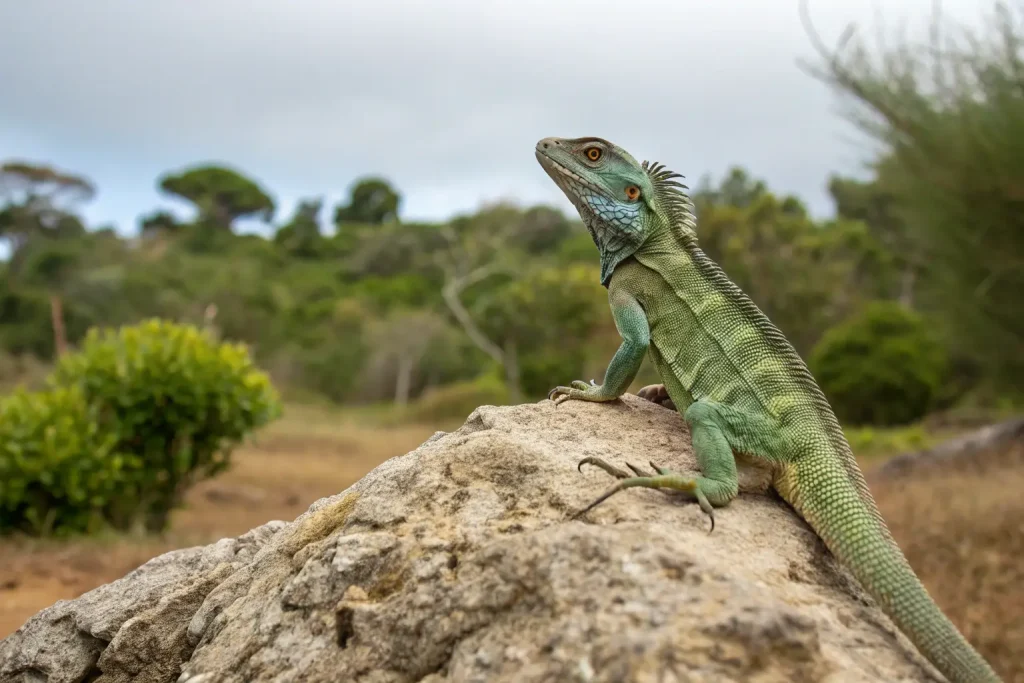
Endangerment Level:
According to the International Union for Conservation of Nature (IUCN) Red List, the water monitor lizard (Varanus salvator) is currently classified as “Least Concern.” This classification reflects their widespread distribution, adaptability to various habitats, and relatively stable populations across much of their range. However, this overall status masks significant regional variations in population health and conservation challenges.
Some subspecies and local populations face substantial pressures that have reduced their numbers significantly, particularly in areas with intense human development or unsustainable harvesting. For example, certain island populations have become increasingly isolated and vulnerable to localized extinction events.
Threats:
Despite their adaptability, water monitor lizards face numerous anthropogenic threats:
Habitat Loss and Degradation: Rapid urbanization, agricultural expansion, and deforestation throughout Southeast Asia have significantly reduced available habitat, particularly the wetland and riparian environments that water monitors prefer. Mangrove forest destruction has been especially detrimental to coastal monitor populations.
Commercial Exploitation: Water monitors are extensively harvested for their skin, which is highly valued in the leather industry for producing luxury goods such as handbags, belts, and shoes. It’s estimated that hundreds of thousands of water monitor skins enter international trade annually, with Indonesia and Malaysia being major exporters.
Hunting for Food and Traditional Medicine: In many parts of their range, water monitors are hunted for their meat, which is considered a delicacy in some cultures. Various body parts are also used in traditional medicine practices, creating additional harvesting pressure.
Pet Trade: The exotic pet trade removes significant numbers of water monitors from wild populations, particularly affecting juvenile individuals. While some specimens in trade are captive-bred, many are still wild-caught, often using methods that can harm both target and non-target species.
Human-Wildlife Conflict: As adaptable creatures sometimes drawn to human settlements for food opportunities, water monitors may be killed as perceived pests or out of fear, despite their ecological benefits as controllers of rodent populations and scavengers.
Pollution: Water pollution affects both the monitors directly and their prey species, particularly in aquatic environments near industrial or agricultural areas where chemical runoff is common.
Conservation Efforts:
Several approaches are being implemented to protect water monitor populations:
CITES Regulation: Water monitors are listed in Appendix II of the Convention on International Trade in Endangered Species of Wild Fauna and Flora (CITES), which regulates and monitors their international trade to prevent unsustainable exploitation.
Protected Areas: Conservation reserves and national parks throughout Southeast Asia offer habitat protection for water monitors and other wildlife, though enforcement of protection varies considerably between regions.
Sustainable Harvesting Programs: In countries like Indonesia and the Philippines, sustainable harvesting initiatives aim to regulate collection while providing economic benefits to local communities, potentially reducing incentives for illegal harvesting.
Captive Breeding: Commercial captive breeding operations in several countries now produce water monitors for the leather industry and pet trade, potentially reducing pressure on wild populations.
Research and Monitoring: Ongoing scientific studies track population trends, habitat requirements, and threats to water monitors, providing data essential for effective conservation planning.
Education and Awareness: Conservation organizations work to educate communities about the ecological value of water monitors, reducing fear-based killing and promoting coexistence.
Despite these efforts, coordinated international conservation action remains necessary to ensure that water monitor populations remain viable throughout their native range, particularly for subspecies facing intensified local pressures.
Interesting Facts
The water monitor lizard is a creature of fascinating contradictions and remarkable capabilities that continue to surprise even experienced herpetologists:
Extraordinary Intelligence: Water monitors display problem-solving abilities comparable to those of some mammals. They can remember solutions to challenges for years and recognize individual human caretakers. Researchers have documented them learning to open doors, manipulate feeding devices, and navigate complex mazes, suggesting cognitive abilities far beyond what was once assumed possible for reptiles.
Venomous Revelation: Long considered non-venomous, recent research has revealed that water monitors actually possess venom glands. Their venom isn’t typically dangerous to humans but contains anticoagulant compounds that prevent prey blood from clotting, facilitating feeding and possibly aiding in digestion. This discovery has revolutionized our understanding of lizard evolution.
Swimming Capabilities: These lizards are remarkably proficient swimmers, capable of crossing significant bodies of water. There are documented cases of water monitors swimming more than 10 miles between islands, explaining their presence on isolated landmasses. They can remain submerged for up to 30 minutes and use their powerful tails to propel themselves through water with deceptive speed.
Cultural Significance: Throughout their range, water monitors feature prominently in local folklore and mythology. In Thai culture, they’re known as “tua-ngern-tua-tong” (silver and gold animals), believed to bring good fortune to those who spot them. In parts of Malaysia and Indonesia, monitor sightings are considered omens related to weather patterns by traditional communities.
Resilient Survivors: Water monitors have demonstrated remarkable resilience to environmental changes. They’re one of the few large reptiles that has adapted successfully to urban environments, with thriving populations in cities like Bangkok and Singapore. They’ve been observed using man-made structures as basking sites and hunting grounds, demonstrating behavioral plasticity rarely seen in large reptilian species.
Incredible Senses: Their chemosensory abilities are among the most developed in the animal kingdom. A water monitor can detect prey that passed through an area days earlier and can follow scent trails underwater—a rare ability even among aquatic predators. Their vision is also exceptional, capable of detecting movement up to 250 meters away.
Regenerative Abilities: While they cannot regrow entire limbs like some smaller lizards, water monitors possess impressive tissue regeneration capabilities. They can heal severe wounds remarkably quickly and with minimal scarring, a trait that has attracted interest from medical researchers studying tissue regeneration applications.
Longevity Records: While typically living 15-20 years in captivity, exceptional specimens have been documented living well beyond 20 years, with one verified record of a captive water monitor reaching 27 years of age—extraordinary longevity for a large reptilian predator.
Tips for Caring for the Animal
Habitat Requirements:
Creating an appropriate enclosure is perhaps the most challenging aspect of water monitor ownership:
Size Requirements: Adult water monitors require extraordinarily large enclosures—minimum dimensions should be at least 8’L × 4’W × 6’H, though larger is always better. Young monitors can start in smaller enclosures but will quickly outgrow them.
Construction Materials: Enclosures must be escape-proof and extremely durable. Commercial reptile cages rarely suffice; custom-built enclosures using materials like PVC panels, sealed wood, or concrete are typically necessary. Glass-fronted viewing areas can be incorporated but must be securely framed.
Water Features: A substantial water area is essential, deep enough for complete submersion and large enough for swimming. This pool should have filtration systems to maintain cleanliness and be easily drainable for regular cleaning.
Temperature Gradient: Provide ambient temperatures of 80-90°F (27-32°C) with a basking spot of 120-140°F (49-60°C). Nighttime temperatures can drop to 75-80°F (24-27°C). Use a combination of overhead heating (ceramic heat emitters or halogen flood lamps) and substrate heating (heat tape or panels).
UVB Lighting: High-output UVB lighting is essential for vitamin D synthesis and calcium metabolism. Use reptile-specific UVB bulbs rated for large lizards and replace according to manufacturer recommendations, typically every 6-12 months.
Substrate: Water monitors require substrate that holds humidity while being resilient enough to withstand their powerful digging. A mix of topsoil, play sand, and cypress mulch in areas away from the water feature works well. Substrate depth should be at least 12″ to allow for natural digging behaviors.
Furnishings: Include sturdy climbing branches, elevated platforms for basking, and multiple hiding areas throughout temperature gradients. All furniture must be securely anchored, as monitors are powerful enough to topple unsecured items.
Diet and Nutrition:
Feeding Schedule: Juvenile water monitors should be fed every 1-2 days, subadults every 2-3 days, and adults every 3-7 days, adjusting based on activity level and body condition.
Diet Composition: Offer whole prey items including appropriately sized rodents, chicks, quail, fish, and occasional eggs. Include invertebrates for younger monitors. Avoid excessive reliance on single prey types.
Supplementation: Dust food items with calcium powder (with D3 for enclosures with insufficient UVB) at most feedings and a reptile multivitamin once weekly. Be cautious with vitamin A supplementation, as excess can cause toxicity.
Feeding Techniques: Use feeding tongs to present food and minimize hand associations. Some keepers establish separate feeding chambers to reduce territorial food aggression in the primary enclosure.
Health Considerations:
Veterinary Care: Establish a relationship with an exotic veterinarian experienced with monitor lizards before emergencies arise. Annual check-ups including parasite screening and basic bloodwork are recommended.
Common Health Issues:
- Metabolic Bone Disease: Prevented through proper diet, supplements, and UVB exposure.
- Respiratory Infections: Often resulting from insufficient temperature gradients or excessive humidity.
- Parasites: Both internal (nematodes, protozoa) and external (mites, ticks) parasites require veterinary intervention.
- Obesity: Common in captivity due to overfeeding and insufficient exercise.
- Thermal Burns: From malfunctioning or improperly installed heating equipment.
Behavioral Indicators: Learn to recognize signs of stress or illness, including decreased activity, loss of appetite, abnormal posturing, excessive basking, or unusual breathing patterns.
Handling and Socialization:
Early Socialization: Begin gentle, consistent handling when your monitor is young, using positive reinforcement techniques. Never chase or forcibly restrain your lizard.
Approach Techniques: Always approach from the side, not from above (which mimics predatory behavior). Move slowly and deliberately, speaking softly to announce your presence.
Support Requirements: Always fully support your monitor’s body, particularly the legs and tail. Never grab or restrain by the tail, as this can cause injury and stress.
Frequency: Brief, positive interactions are better than infrequent, extended handling sessions. Gradually increase duration as trust develops.
Target Training: Many keepers successfully implement target training using clickers and food rewards, which can facilitate health checks and reduce stress during necessary handling.
Remember that even well-socialized water monitors retain their wild instincts and powerful defensive capabilities. Respect their space, recognize their body language, and never become complacent about safety precautions.
Role in the Ecosystem
Ecological Importance:
Water monitor lizards fulfill several crucial ecological roles that contribute to the health and balance of their native ecosystems:
Apex and Mesopredators: Depending on their size and the specific ecosystem, water monitors function either as apex predators or important mesopredators. They help regulate populations of smaller vertebrates and invertebrates, preventing overabundance of certain prey species that could otherwise disrupt ecological balance.
Scavengers: Their willingness to consume carrion makes water monitors nature’s cleanup crew. By removing carcasses, they help prevent disease spread and recycle nutrients back into the food web. This scavenging behavior is particularly valuable in water bodies, where decaying matter can rapidly compromise water quality.
Seed Dispersers: Though primarily carnivorous, water monitors occasionally consume fruits, inadvertently functioning as seed dispersers when they defecate in new locations. This interaction contributes to forest regeneration and plant diversity, particularly in riparian and wetland environments.
Ecosystem Engineers: Through their digging activities, water monitors create burrows that may later be used by other wildlife. Their nesting excavations also turn and aerate soil, enhancing nutrient cycling and plant growth in their habitats.
Indicators of Ecosystem Health: Due to their position in the food web and dependence on both aquatic and terrestrial habitats, water monitor populations can serve as indicators of overall ecosystem health. Their presence in healthy numbers generally suggests functioning, productive ecosystems with sufficient prey bases and suitable habitat conditions.
Impact of Decline:
The reduction or local extinction of water monitor populations can trigger various ecological cascades:
Mesopredator Release: When water monitors are removed from ecosystems, smaller predator species may experience population booms without the top-down regulation monitors provide. This can lead to overexploitation of small prey species, disrupting community structure.
Carrion Accumulation: Fewer scavengers means more persistent carrion in the environment, potentially increasing disease transmission among wildlife and contaminating water sources.
Pest Proliferation: Water monitors help control populations of potential pest species including rodents and certain invertebrates. Their absence can contribute to unchecked growth of these populations, affecting both natural ecosystems and human interests in agricultural areas.
Loss of Nutrient Transport: As mobile links between aquatic and terrestrial environments, water monitors facilitate nutrient flows between these systems. Their decline can reduce nutrient exchange, potentially affecting plant productivity in certain microhabitats.
Cultural Impacts: Beyond ecological effects, the loss of water monitors represents a cultural impoverishment for communities that have traditional relationships with these reptiles, whether through folklore, traditional ecological knowledge, or sustainable harvesting practices.
Research has shown that the ecological services provided by large reptiles like water monitors are often underappreciated until these species decline. Conservation efforts increasingly recognize that protecting such species isn’t merely about preserving biodiversity but maintaining essential ecological processes and functions that benefit entire ecosystems and the human communities that depend on them.
Conclusion
Water monitor lizards represent one of the most fascinating, challenging, and rewarding species in the reptile-keeping hobby. These intelligent, powerful reptiles demand nothing less than exceptional commitment from their keepers—spatially, financially, and educationally. Their care requirements are extensive, from enormous custom enclosures and specialized diets to complex temperature and humidity management systems.
Throughout this guide, we’ve explored the natural history, biological adaptations, and captive care requirements of these remarkable reptiles. We’ve seen how their semi-aquatic lifestyle shapes their needs, how their intelligence demands environmental enrichment, and how their powerful physiology requires careful handling and secure housing. When properly maintained, water monitors can thrive in captivity, developing distinct personalities and forming genuine bonds with dedicated keepers.
However, responsible ownership begins with honest self-assessment. Before acquiring a water monitor, potential keepers must thoroughly evaluate their capacity to provide appropriate long-term care for an animal that can live two decades or more and grow to sizes that many homes simply cannot accommodate. The majority of water monitors surrendered to rescues or rehoming situations come from well-intentioned owners who underestimated the species’ requirements.
For those who can provide appropriate care, water monitors offer an unparalleled opportunity to develop relationships with a living descendant of the dinosaur age—an animal whose intelligence, adaptability, and prehistoric presence make it truly special among reptiles. Whether you’re considering water monitor ownership or simply expanding your knowledge about these magnificent lizards, remember that respect for their wild nature and commitment to their welfare must guide all interactions.
If you’re inspired to support water monitors beyond personal ownership, consider contributing to conservation organizations working to protect their natural habitats, supporting ethical breeding programs, or educating others about responsible exotic pet ownership. Together, we can ensure that these remarkable reptiles continue to thrive both in their native environments and in the care of knowledgeable, dedicated enthusiasts.
Frequently Asked Questions
How long do water monitor lizards live in captivity?
With proper care, water monitor lizards typically live 15-20 years in captivity, though some exceptional specimens have reached 25+ years. Their longevity highlights the significant long-term commitment required when adopting one as a pet. Factors affecting lifespan include genetics, diet quality, habitat conditions, and access to appropriate veterinary care.
How big will my water monitor get?
Adult water monitors commonly reach 4-5 feet in total length in captivity, with males generally growing larger than females. Some individuals, particularly males with optimal nutrition and housing, can exceed 6 feet. Their substantial size necessitates exceptionally large living quarters that many private homes cannot accommodate. Growth is most rapid during the first 3-5 years, with males continuing to add bulk throughout their lives.
Is it legal to keep a water monitor as a pet?
Legality varies significantly by location. Many states and municipalities have specific regulations restricting or prohibiting large reptiles, including water monitors. Some areas require special permits, while others have outright bans. Always check local, state, and federal laws before acquisition. Additionally, ensure your monitor was legally obtained with appropriate CITES documentation if imported.
How much does it cost to properly keep a water monitor?
Initial setup for a proper adult water monitor enclosure typically costs $2,000-5,000 or more, including custom habitat construction, appropriate heating, lighting, filtration systems, and furnishings. Monthly expenses range from $100-200 for food, electricity, substrate replacement, and regular maintenance. Additionally, budget for specialized veterinary care, which can exceed $500 per visit for such a large reptile.
Are water monitors dangerous pets?
Water monitors are powerful animals with sharp claws, strong jaws, and potentially dangerous tails. While they can be socialized with consistent, appropriate handling from a young age, they retain their wild instincts and defensive capabilities. Even well-adjusted monitors can cause serious injuries if frightened or improperly handled. They’re not recommended for households with young children or inexperienced reptile keepers.
What should I feed my water monitor lizard?
A nutritionally complete diet includes whole prey items such as appropriately sized rodents, chicks, quail, and fish, supplemented with calcium and vitamins. Juvenile monitors benefit from the addition of insects like crickets and roaches. Food items should be varied to provide balanced nutrition. Most adult monitors are fed 2-3 times weekly, adjusting portions based on activity level and body condition to prevent obesity.
Do water monitors recognize their owners?
Yes, water monitors possess remarkable intelligence and can definitely recognize their regular caretakers. They often develop distinct behaviors toward familiar individuals versus strangers. Many keepers report their monitors responding differently to their voice, scent, and appearance compared to unfamiliar people. This recognition develops through consistent, positive interactions and appropriate socialization from a young age.
How often does a water monitor’s habitat need cleaning?
Water features require daily maintenance with partial water changes and filter cleaning. Complete water area disinfection should occur weekly. Solid waste should be removed immediately upon discovery. Substrate in terrestrial areas typically needs partial replacement monthly and complete replacement every 3-6 months, depending on the monitor’s size and activity level. Regular cleaning prevents bacterial buildup and reduces odors.
Can water monitors be housed together?
Generally, water monitors should be housed individually. Adult males are territorial and will fight, potentially causing serious injuries or death. While females may tolerate each other in extremely large enclosures with multiple resources, aggression remains a risk, particularly during feeding. Cohabitation attempts require extensive space, multiple feeding stations, numerous hiding areas, and constant monitoring for signs of stress or aggression.


